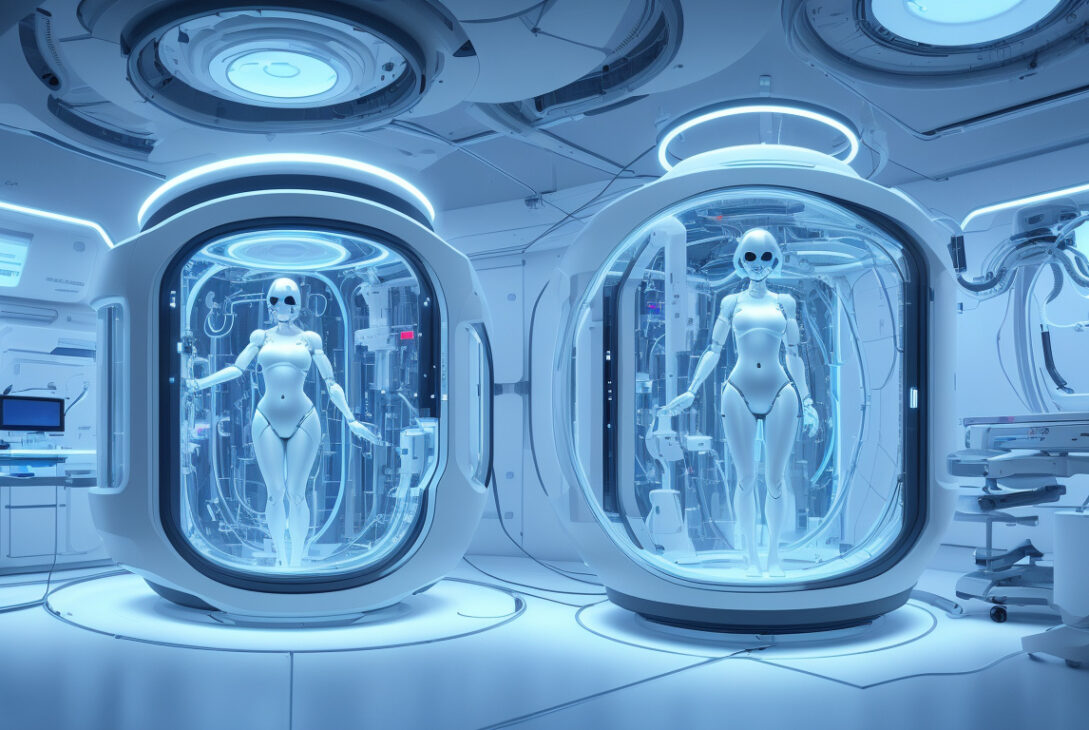Debunking the $14,000 Pregnancy Robot from China and Examining the Real Potential of Artificial Wombs
Recently, a sensational story went viral online claiming that a Chinese scientist was developing a $14,000 “pregnancy robot” designed to carry a fetus from conception to birth. This intriguing tale featured vivid images of shiny, chrome-plated robots harboring human infants within mechanical bellies. Major outlets such as Newsweek, The Economic Times, and ChosunBiz cited a source called Kuai Ke Zhi and attributed the project to a figure named Zhang Qifeng, described variously as a CEO or PhD affiliated with Singapore’s Nanyang Technological University (NTU). The prototype was said to be coming as soon as 2026 at a price under 100,000 yuan (about $13,900 USD).
However, after careful investigation, it turns out this pregnancy robot doesn’t exist. Nanyang Technological University confirmed no such person named Zhang Qifeng has ever been affiliated with the institution, nor is there any record of research on a “gestation robot” taking place there. Fact-checkers including Snopes have confirmed the story as a hoax.
Why Did This Story Go Viral?
The idea of a robot that could replicate human pregnancy taps into a blend of fascination and skepticism about reproductive technology. The quoted anonymous developer in the story claimed some people don’t want to marry or undergo pregnancy but still desire children, suggesting the robot would offer a new way to parenthood. However, the details about how this human-robot interaction would facilitate pregnancy were vague, and no credible scientific institution has reported such a device.
The Reality: Advancements in Artificial Womb Technology
Although the “pregnancy robot” itself is fake, the concept of an artificial womb is very much a focus of ongoing scientific research. At the Children’s Hospital of Philadelphia (CHOP), researchers have developed a device called the EXTRA-UTERINE ENVIRONMENT FOR NEWBORN DEVELOPMENT (EXTEND). This artificial womb aims to support extremely premature babies—those born between 23 and 28 weeks gestation—by replicating conditions similar to the uterus.
The EXTEND system involves a sterile bag filled with lab-made amniotic fluid enriched with nutrients and growth factors. The baby’s umbilical cord connects to an external oxygenator that mimics the placenta’s role in gas exchange. The environment carefully controls temperature, pressure, light, and protects the infant from infection. The device has successfully supported premature lambs for up to a month, allowing normal development. Recent studies also show the device helps preserve normal gene activity in the brain, a critical factor in reducing neurodevelopmental problems linked to preterm birth.
The team at CHOP plans to soon initiate human trials, though ethical questions remain on when and how to test the device safely since many premature babies currently survive with existing neonatal care.
Challenges and Ethical Considerations
Experts like Dr. Harvey Kliman of Yale University reflect that while the artificial womb concept is intellectually intriguing, creating a safe, infection-proof system that can support a fetus for the full nine months is vastly complex. “Should we do it? My answer would be categorically ‘no,’” Kliman said, emphasizing ethical concerns.
One major biological hurdle is the process of implantation, where a fertilized embryo embeds itself into the uterine lining—a delicate interaction that helps sustain pregnancy. Dr. Lusine Aghajanova from Stanford Medicine stressed the importance of implantation, describing it as “the seed and the soil.” Any artificial gestational environment would likely need some means to replicate or simulate the uterine lining’s supportive functions.
In contrast, Kliman suggested it might be possible to bypass implantation by suspending the embryo in nutrient-rich fluid, akin to hydroponically growing a plant. But this idea, too, remains theoretical and true replication of natural pregnancy conditions might be more complex than anticipated.
Conclusion: Science Fiction vs. Scientific Fact
The viral “pregnancy robot” story from China is fiction, but the core idea of supporting human life outside the womb is rooted in serious scientific inquiry. Artificial womb technologies like EXTEND are promising advances toward improving the survival and health of premature infants. However, a fully functional robotic pregnancy machine that can mimic the entire gestational process from conception to childbirth remains a distant and controversial goal.
For now, artificial wombs serve as life-saving bridges for early-born infants rather than substitutes for natural pregnancy. The ethical, biological, and technical challenges they present mean that while the idea captivates the imagination, it is far from becoming a commercial reality anytime soon.
For further insights and updates on artificial womb research and related reproductive technologies, subscribe to Live Science’s newsletter.










